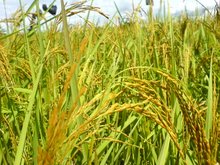HONDA CITY 1.5 VTEC

BRAKING SYSTEM TYPE
- Body coloured Bumper
- Body coloured Door Mirror & Outer Handle
- Body Coloured Side Protector
- Hood Insulator
- Wiper System with Intermittent Wiper (Washer Interlocking)
- Front Fog Light
- Mudguards
- Exhaust Pipe Finisher
- 15" Alloy Wheels
- 7 Speed Steer-Matic
- Power Steering with EPS and Tilt Column
- Power Door Mirror and Window
- Power Door Lock
- Rear View Mirrors with Day / Night Change
- Sunvisor Vanity Mirror with Lid
- Driver Seat with Height Adjuster
- Driver Seat Armrest
- Front seatback pockets
- Seatbelt Warning Indicator
- Trunk Light
- Chrome Inner Handle
- Front and Rear Cupholders
- Warning Light -Fuel Empty and Door Open
- Water temperature Indicator and Tachometer
- Front and Rear Speakers
- AM/FM Stereo Radio with CD Player and MP3
- 60:40 Split Rear Seat
- Ultra Seat Function
- Rear Seat Armrest
- Rear Seat Underbox
- Leather Steering
- Shift Knob with Emblem
- Self Illumination Meter
- Interior Colour (Black)
- Console Panel (Silver Metallic)
- Anti-lock Braking System (ABS)
- Electronic Brake Force Distribution (EBD)
- Brake Assist (BA)
- Front Bumper Beam
- Door Beam ( Front / Rear)
- Safety Power Window (Driver)
- Front Shoulder Seatbelt (3-point ELR (x2) with Adjuster
- Rear Seatbelt ( 3-point (x2) + 2-point Manual
- Child Proof
- Defroster
- Shift Lock
- High-mount Stop Lamp
- Immobilizer
- Reverse Sensors

TOYOTA VIOS 1.5G
PRICE ON THE ROAD WITH INSURANCE : RM 83,880.40
MODEL : 1NZ-FE
TYPE : In-line 4-cylinder DOHC VVT-I
DISPLACEMENT (cc) : 1496
BORE & STROKE : 75.0 x 84.7
COMPRESSION RATIO : 10.5:1
MAX. OUTPUT (EEC Net) : 80kW (109PS) / 6000 rpm
MAX. TORQUE (EEC Net) : 142Nm (14.5kg-m) / 4200 rpm
TRANSMISSION : 4-Speed Automatic with Super ECT
CHASSIS
GEAR RATIO :
1st - 2.847
2nd - 1.552
3rd - 1.000
4th (O/D) - 0.700
REVERSE - 2.343
FINAL - 3.850
SUSPENSION
Front : MacPherson Strut with Stabilizer
Rear : ETA Beam with Stabilizer
BRAKE
Front : 14" Ventilated Disc
Rear : 14" Solid Disc
TYRE : 185/55R15
DIMENSIONS
TREAD:-
Front (mm) : 1455
Rear (mm) : 1430
KERB WEIGHT (kg) : 980
FUEL TANK CAPACITY (litre) : 45
MINIMUM TURNING RADIUS (m) :5.3
EXTERIOR:
- Green laminated with Top Shade Windshield
- Intermittent Wipers
- Chrome Body Side Moulding
- Chrome Outside Door Handle
- Chrome Rear Licence Plate Garnish
- 15" Alloy Rim
- Colour-keyed Mud Guard
- Dual Cell, Coloured-keyed Reverse Sensor
INTERIOR FEATURES:
- Inner Mirror (with day & night mirror)
- 3-Spoke Urethane with Tilt-Adjustable Steering Type
- PVC with Chrome Shift Lifter & Knob
- Fabric (dark grey) Seat Material
- 2 x Height Adjuster Front Headrest
- 2 x Fixed Rear Headrest
- Power Door Lock
- Power Wing Mirror
- Metallic center Cluster, Metallic Gear Shift and Lever Base, Metallic Power Window Switch Plate (Panel Finishing)
- 2-DIN Turner, CD-Player, MP3, 6 Speaker with Circle Surround System Audio System
- Console Box
- Passenger Seat Under Tray
- Seat Hook for Front Passenger Seat
SAFETY FEATURES:
ACTIVE SAFETY
- Anti-lock Braking system (ABS)
- Electronic Brake-force Distribution (EBD)
- Front Fog Lamps
- Shift Lock System
- Rear Window Defogger
PASSIVE SAFETY
- GOA Body
- SRS Airbag for Driver and Passenger
- Side Door Impact Beams
- Head Impact Protection Structure
- Whiplash Injury Lessening (WIL)
- 3-Point ELR X 2 Front Seat Belt
- 3-Point ELR x 2 + 2-Point NR x 1 Rear Seat Belt
- Adjustable Seatbelt Anchor
- Collapsible Steering Column
- Safe Brake Pedal
ALARM
- Immobilizer
- Siren with Back-up Battery
- Cabin Sensor
- Anti-tow Sensor

ADDITIONAL INFO (PERFORMANCE) :
VARIABLE VALVE TIMING WITH INTELLIGENCE (VVT-i)
The VIOS is equipped with a continuous variable valve timing mechanism, the VVT-i. By optimising the timing of the valves, the engine promises performance whether you are accelerating, cruising or overtaking. The heart of the VIOS is incredibly responsive, making changes in 1/1000th of a second. By optimising valve timing, the engine delivers solid torque through low-to-medium rpms. The efficient combustion uses fuel more effectively for improved performance.
DRAG: CD=0.30 (COEFFICIENCY OF DRAG) :
The VIOS doesn't only look fast, it is fast. each part of it was examined for its impact on aerodynamics. The result: a Cd figure equalling that of a sports car and a sleekness made for the young at heart. As you head towards your destination, its aerodynamics improve the VIOS's acceleration, drivalibility and efficiency.
SUSPENSION:
The suspensions is a lightweight, compact-sized wonder that promises a smooth ride. MacPherson Strut with Stabilizer are employed in front for the ultimate steering response and linearity. The rear of the VIOS is supported by ETA Beams with Stabilizers, offering the best of independent and rigid-type suspensions.
P.S: Tak pilih VIOS or City, pilih CIVIC pun OK.


















